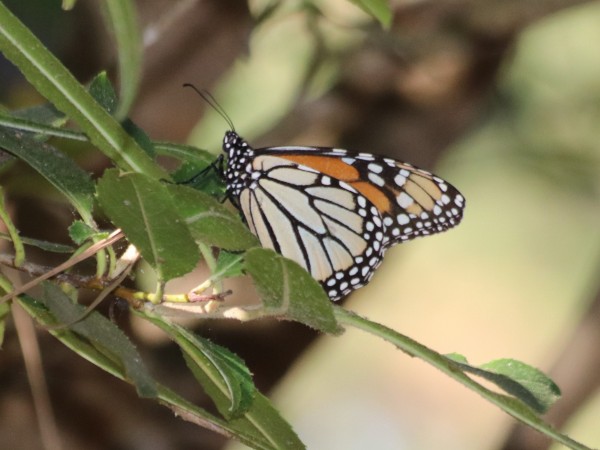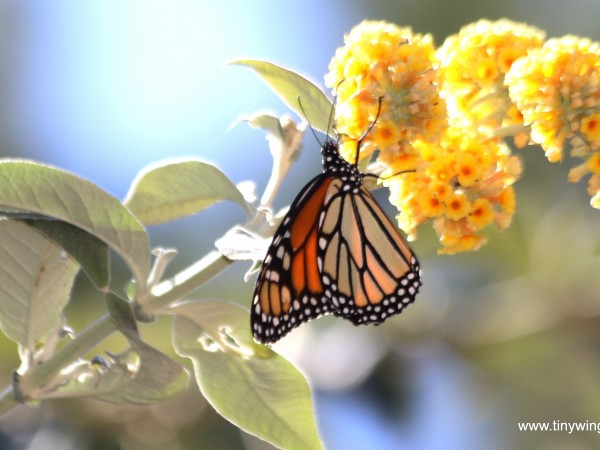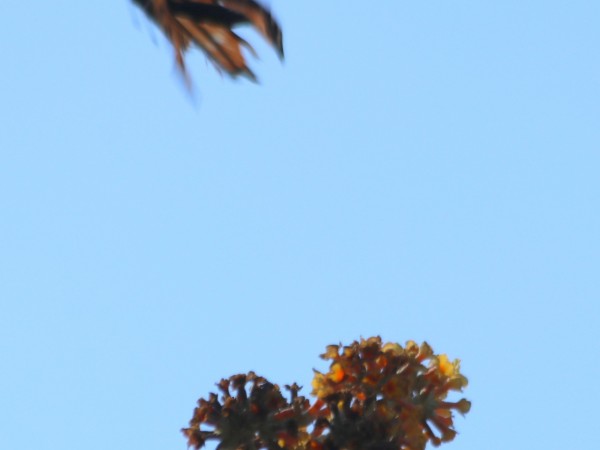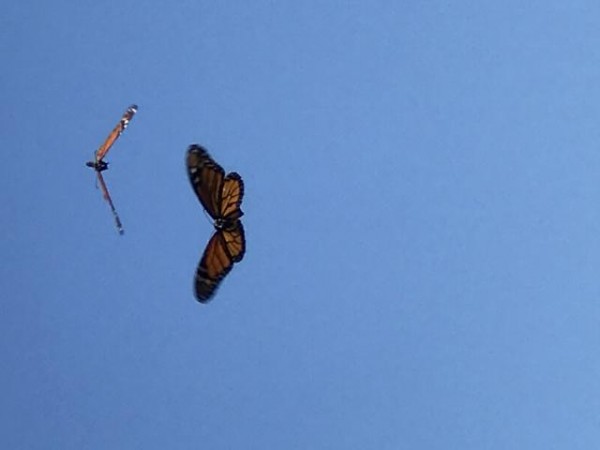Western Monarchs 2019 Fall Report #9
By Gail Morris
October 31, 2019
As the Fall migration progresses more monarchs are appearing in California and the southern portions of the West. While warm temperatures greeted migrants near the coast, colder weather was rolling in further inland encouraging monarchs on their way. The first monarch counts in California are less than a month away.
Last week Dr. Tom Landis of Oregon and colleagues took a road trip to see the monarchs beginning to gather at the California overwintering sites. In our previous update, we reported small clusters already forming at Santa Cruz, but at Pacific Grove, further south across the bay, the monarch activity was different.
“We visited the Pacific Grove site on Thursday afternoon and enjoyed seeing monarchs cruising around and nectaring. Temperatures were in the 80's which is way above normal so there were no clusters evident. In spite of this, a steady stream of visitors were walking the paths or relaxing on benches and enjoying the cruising monarchs. We're all hoping and praying for a mild winter with no damaging wind storms that could reduce the already critically low western monarch population.”
Angela was also there and kept her eyes on the condition of the monarchs she found at Pacific Grove Monarch Sanctuary.
“We are weary but in good shape from the long trip, unlike a few Monarchs we saw at the Pacific Grove Monarch Sanctuary. We had unseasonably warm temps while we were there (85 degrees), so the Monarchs there were fluttering around like crazy and chasing each other in the trees. There was one warrior in particular I tried to photograph, but he flew away quickly, but his battered body is very evident. The photo is not that great, but you get the idea he's been around a bit.”
Not all monarchs are in California yet, some are still on their way, especially in the Southern regions of the Southwest where monarchs were refueling on their journey. Monarchs continue to flow through in the greater Phoenix and Tucson areas in particular. Patty in Tempe, Arizona, found a monarch visiting her yard on October 28.
“Caught male monarch nectaring on Cosmos in my back yard at 9:30 a.m.”
Other monarchs were further along their journey throughout California. Stacy in Llano, California, looked outside and saw four monarchs in a nearby tree on October 20.
“We saw these outside of our room.”
Sometimes you aren’t sure if you are witnessing several monarchs streaming through your yard or just the same one returning. This is still important information to report. Nikki in Aguanga, California, was in that position. Good to see this report form October 22.
“Have seen several 6 or 7 in past week, not sure if it might be the same one coming to my milkweed plant.”
What will monarchs in the West do this week? You can help us all learn more about the Fall migration in the West as it unfolds. Be sure to report every monarch sighting so we can all learn more about monarchs in the West.
Look at our Journey North Maps for ways you can report sightings:
- Adult Monarchs
- Monarch egg
- Monarch Fall Roost
- Monarch larva
- Monarch Peak Migration
- Monarch Captive-reared
Gail Morris is the Coordinator of the Southwest Monarch Study (www.swmonarchs.org), a Monarch Watch Conservation Specialist, and the Vice President of the Monarch Butterfly Fund and the Central Arizona Butterfly Association. The Western Monarch Population News is based on comments provided to Gail Morris. We hope to increase the number of sightings and therefore photos and comments entered into the Journey North database. We rely on the volunteers who communicate regularly with Gail and who agree to participate in our effort to increase awareness of the population of western Monarchs.




